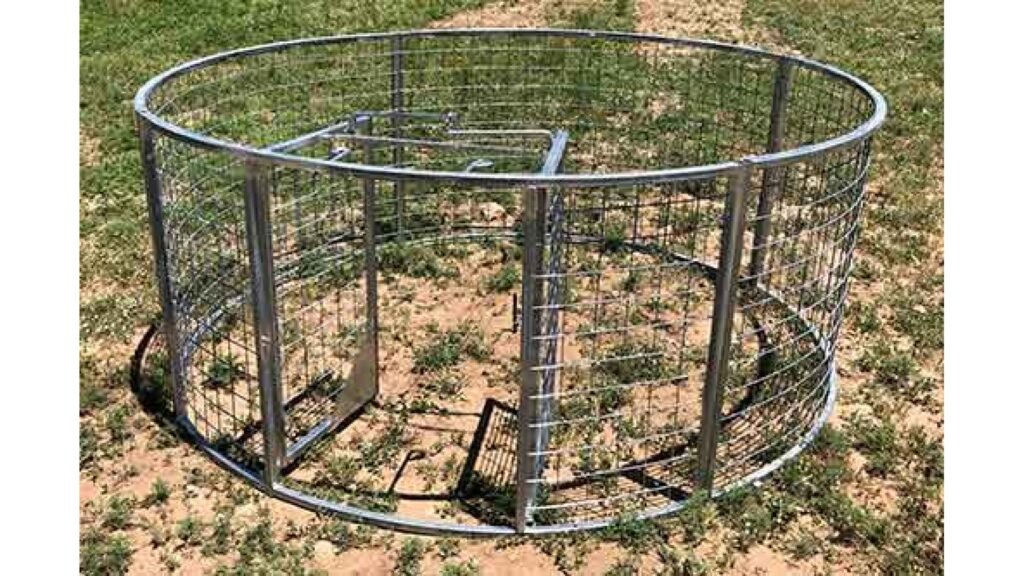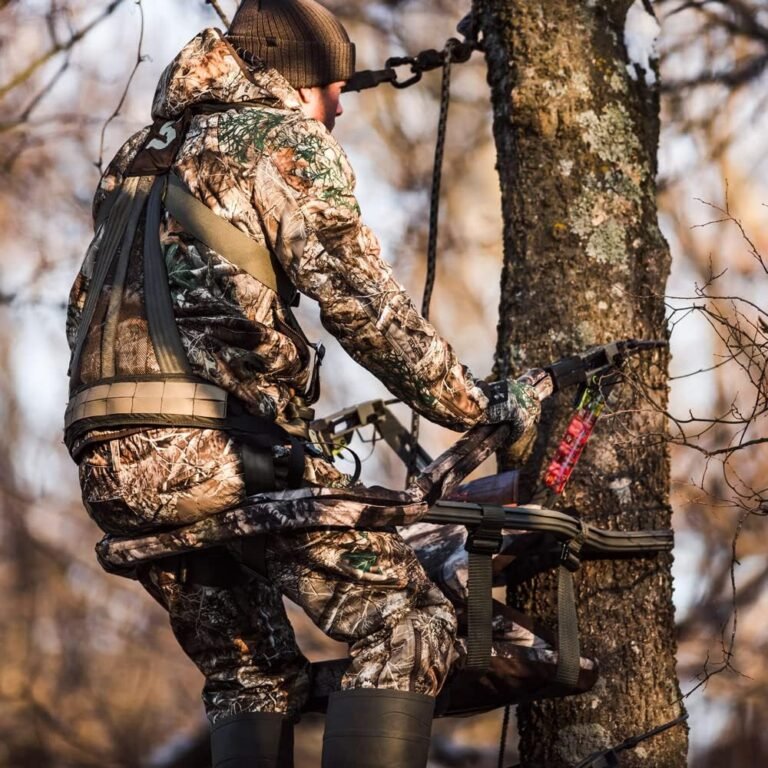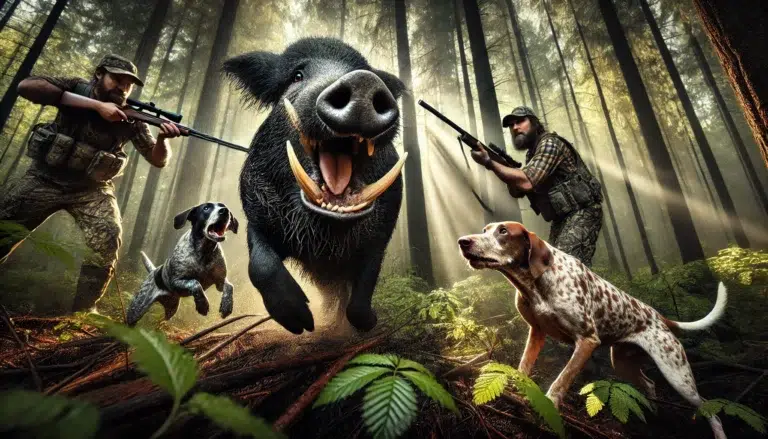Hog Traps: Best Practices and Equipment for 2024
Ah, the world of hog traps! It may not sound like the most fascinating topic initially, but trust me when I say there’s much more to it than meets the eye.
So, let’s dive right in and get acquainted with these ingenious contraptions. Now, before we get into the nitty-gritty details, let’s start with a definition.
Hog traps are specially designed structures used for capturing and containing wild hogs. These traps aim to confine these untamed beasts in a safe and controlled manner, allowing for efficient management of hog populations.
Definition and Purpose of Hog Traps
Hog traps are handy tools in combating the rising population of feral hogs. These sturdy enclosures are constructed in various sizes and designs to suit different trapping techniques for hog hunting. They provide an effective means to capture troublesome hogs that wreak havoc on agricultural lands, cause ecological imbalances, and pose risks to human safety.
By restricting their movement within these traps, landowners, farmers, and wildlife management agencies can gain better control over this invasive species. With hog trapping efforts focused on specific areas experiencing overpopulation or damage from hogs rooting up vegetation or tearing through valuable crops, it becomes easier to manage their numbers effectively.
Importance of Hog Population Control
Now, you might be wondering why controlling hog populations is so crucial. Well, my friend, let me enlighten you.
Feral hogs reproduce rapidly—a bit too rapidly if you ask me—and can cause significant environmental and economic damage if left unchecked. These voracious creatures have an insatiable appetite that leads them to ravage fields filled with crops like corn or soybeans in no time flat.
Their destructive behavior not only affects farmers’ livelihoods but also disrupts delicate ecosystems by destroying native plants and habitats. Additionally, hogs are known carriers of diseases that can infect both domestic animals and humans.
Diseases like brucellosis, trichinellosis, and pseudorabies are just a few risks associated with uncontrolled hog populations. By implementing hog trapping methods and controlling their numbers, we can reduce the spread of such illnesses and protect other wildlife from these invasive marauders.
So, as you can see, the proper use of hog traps plays an essential role in managing feral hog populations. Not only do they provide a practical solution to mitigate damages caused by these wild swine, but they also contribute to preserving our ecosystem’s balance and ensuring human safety.
In the next section, we’ll explore different types of hog traps and their advantages and disadvantages. Prepare to be amazed by the ingenuity behind these contraptions!

Types of Hog Traps
Corral traps
Corral traps are a commonly used tool for hog hunting and population control. These traps consist of sturdy panels that form a circular or rectangular enclosure, designed to confine hogs once they enter.
The panels are usually made from heavy-duty galvanized steel or welded wire mesh, ensuring durability and preventing hogs from breaking free easily. Corral traps often have one or more entry points fitted with swinging gates that allow hogs to enter but make it challenging for them to escape.
The advantages of corral traps lie in their versatility and trapping efficiency. They can be easily assembled and disassembled, making them portable for relocation purposes.
Additionally, these traps can accommodate multiple hogs at once due to their larger size, increasing the chances of successful trapping. However, corral traps require ample space for installation and may be less effective if the hog population is scarce in a particular area.
Box traps
Box traps are another popular choice for hog trapping enthusiasts. As the name suggests, these devices consist of an enclosed box-like structure with one or more entry points strategically positioned to entice hogs inside.
The design typically incorporates a trap door mechanism that triggers when a hog enters the confined space. The advantage of box traps lies in their simplicity and effectiveness.
They are relatively easy to construct using readily available materials such as wood or metal mesh. Box traps offer flexibility in terms of size variations depending on the desired target species.
Their compact design allows placement in various terrains while maintaining ease of transportation. However, it’s important to note that box traps may not be as suitable for capturing larger groups of hogs simultaneously compared to corral traps due to their smaller size capacity.
Drop nets
When it comes to trapping techniques for hog hunting, drop nets offer an alternative approach. This method involves suspending a large net above a baited area where hogs are expected to gather.
Once the hogs are in position, the net is released and dropped onto them, effectively trapping them underneath. Drop nets provide certain advantages in specific situations.
They are particularly useful in areas with limited space or when quick and immediate trapping is required. Due to their vertical deployment, drop nets can capture multiple hogs simultaneously without requiring a large ground area.
Additionally, they offer ease of setup and disposal after use. Nevertheless, drop nets have their limitations.
They require careful timing and precise positioning to ensure that hogs are successfully trapped underneath the net during feeding or foraging activities. Moreover, they may not be suitable for capturing larger boars as these individuals can potentially damage or escape through the net if they exert enough force.
By understanding the unique features, advantages, and limitations of corral traps, box traps, and drop nets, hog trappers can determine which type of trap best suits their specific needs and hunting environment. Remember that each trapping approach has its own strengths and weaknesses; choose wisely to maximize your trapping success!
Factors to Consider When Choosing a Hog Trap
When it comes to selecting the right hog trap, there are several factors that need to be taken into consideration. First and foremost is the size of the trap. Hog traps come in various sizes, and it’s important to choose one that can accommodate the number of hogs you intend to catch.
Additionally, location selection plays a crucial role in achieving optimal results. Look for areas where hogs frequent, such as feeding sites or wallows, and set up your trap nearby.
Another aspect to consider is the material durability of the trap. Hogs can be quite strong and destructive, so opt for traps made from sturdy materials like heavy-duty galvanized steel or welded wire mesh.
Ease of setup and maintenance should not be overlooked. Choose a trap that is simple to assemble and disassemble when needed.
Best Practices for Setting Up Hog Traps
A successful hog trapping operation relies on employing proper techniques when setting up traps. Baiting techniques are essential in luring hogs into the trap effectively. It’s crucial to use preferred food choices for hogs as bait, such as corn or acorns, which will increase their attraction towards the trap.
Additionally, strategic placement of bait within the trap is important for enticing hogs while ensuring they enter deep enough to trigger its mechanism. Camouflage techniques play a vital role in maximizing trapping success rates by blending the traps into their surroundings seamlessly.
Using natural materials like branches or foliage can help camouflage the traps and make them less conspicuous to wary hogs. Another crucial factor is minimizing human scent around the traps through proper sanitation practices like wearing gloves when handling baits or avoiding direct contact with surfaces inside the trap that may transfer scent.
In terms of timing considerations, setting up traps during periods when hogs are most active, such as early mornings or late evenings, can significantly increase your chances of success. Additionally, regular monitoring of the traps is crucial to ensure they remain functional, and any captured hogs can be promptly removed.
Legal Considerations for Using Hog Traps
Before embarking on hog trapping, it’s important to familiarize yourself with the legal considerations surrounding this practice. Different states have varying regulations regarding hog trapping methods and requirements. It’s essential to research and understand these regulations to avoid any legal repercussions.
In some cases, permits or licenses might be required for hog trapping activities. These permits are typically obtained from wildlife agencies or local authorities responsible for managing wildlife populations.
Make sure to check whether any specific permits are necessary in your area before setting up traps. Ethical considerations also come into play when engaging in hog trapping.
It’s important to ensure that the welfare of trapped hogs is taken into account throughout the process. Quick and humane dispatch methods should be employed when removing trapped hogs from the area.
Innovative Technologies in Hog Trapping
Advancements in technology have introduced innovative techniques that can enhance hog trapping efficiency. Remote monitoring systems, equipped with cameras for real-time surveillance, allow trappers to monitor their traps remotely without disturbing the hogs’ natural behavior patterns.”
Additionally, GPS tracking devices integrated into traps enable trappers to relocate their traps based on real-time data analysis of hog movement patterns in a specific area. Drone-assisted trapping techniques have also emerged as a promising tool for hog trapping.
Drones equipped with thermal imaging capabilities can be used to search large areas quickly and identify groups of hogs for targeted capture efforts. However, challenges such as limited flight time and potential disturbances caused by drones need to be taken into consideration.



Conclusion
Hog trapping is a complex endeavor that requires careful consideration of various factors, from trap selection to baiting techniques and legal considerations. Trappers can enhance their chances of success by selecting the right trap size, location, and materials.
Employing best practices like strategic bait placement and camouflaging traps increases their effectiveness. Adhering to legal regulations and ethical guidelines ensures responsible hog trapping practices.
Moreover, integrating innovative technologies like remote monitoring systems and drone-assisted techniques offers exciting possibilities for the future of hog trapping. With proper planning and execution, hog trapping can contribute to effective population control while ensuring the welfare of both hogs and ecosystems.





